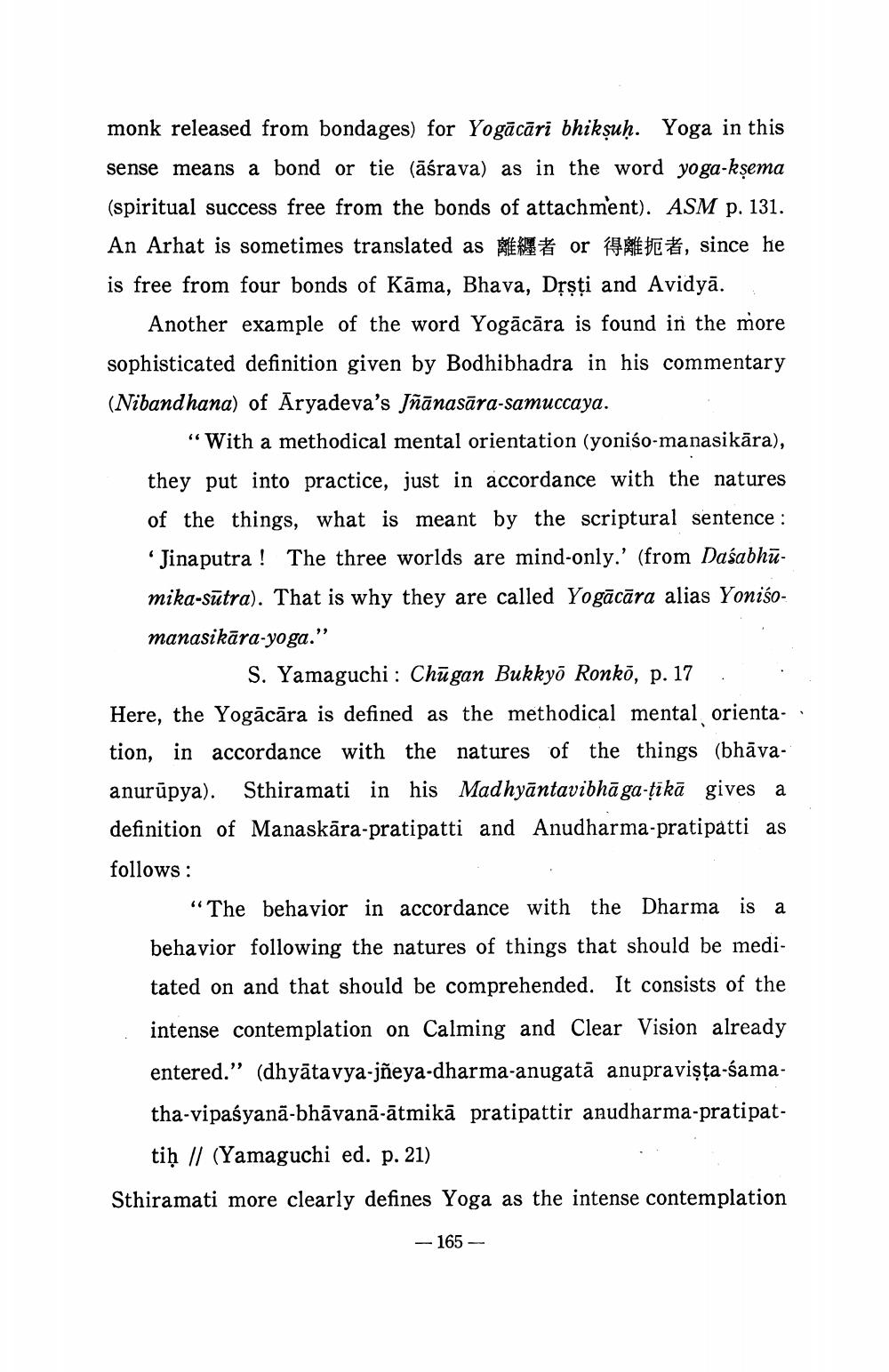Book Title: Analysis Of Yoga In Samdhinirmocana Sutra Author(s): Shinjo Kawasaki Publisher: Shinjo Kawasaki View full book textPage 6
________________ monk released from bondages) for Yogācāri bhikṣuḥ. Yoga in this sense means a bond or tie (āśrava) as in the word yoga-kṣema (spiritual success free from the bonds of attachment). ASM p. 131. An Arhat is sometimes translated as * or *, since he is free from four bonds of Kama, Bhava, Dṛṣṭi and Avidya. Another example of the word Yogacara is found in the more sophisticated definition given by Bodhibhadra in his commentary (Nibandhana) of Aryadeva's Jñānasāra-samuccaya. "With a methodical mental orientation (yoniśo-manasikāra), they put into practice, just in accordance with the natures of the things, what is meant by the scriptural sentence: 'Jinaputra! The three worlds are mind-only.' (from Dasabhumika-sutra). That is why they are called Yogacara alias Yonisomanasikara-yoga." S. Yamaguchi: Chugan Bukkyō Ronkō, p. 17 Here, the Yogācāra is defined as the methodical mental orientation, in accordance with the natures of the things (bhāvaanurūpya). Sthiramati in his Madhyantavibhāga-ṭikā gives a definition of Manaskāra-pratipatti and Anudharma-pratipatti as follows: "The behavior in accordance with the Dharma is a behavior following the natures of things that should be meditated on and that should be comprehended. It consists of the intense contemplation on Calming and Clear Vision already entered." (dhyātavya-jñeya-dharma-anugatā anupraviṣṭa-samatha-vipasyana-bhāvanā-ātmikā pratipattir anudharma-pratipattiḥ // (Yamaguchi ed. p. 21) Sthiramati more clearly defines Yoga as the intense contemplation -165Page Navigation
1 ... 4 5 6 7 8 9 10 11 12 13 14 15 16
